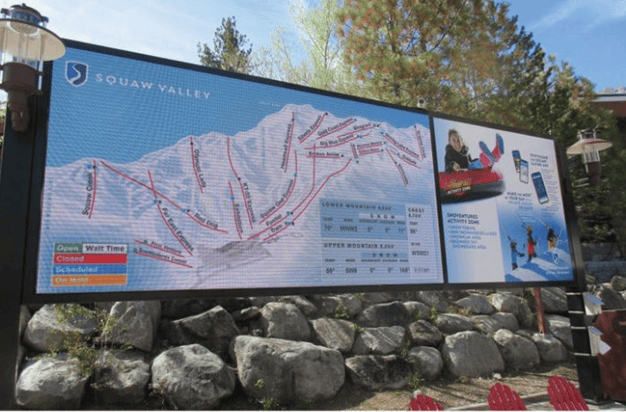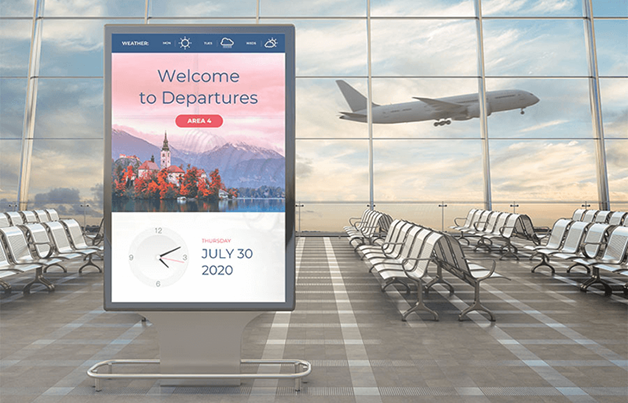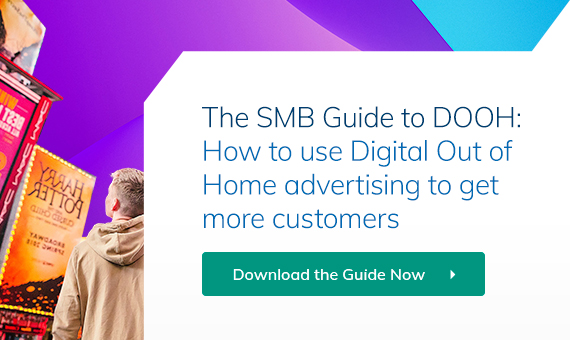In today’s competitive tourism and hospitality industry, capturing the attention of potential customers is paramount.
Traditional advertising methods are gradually losing their impact, necessitating innovative solutions to promote businesses in this sector. Digital out-of-home (DOOH) advertising has emerged as a powerful tool, utilizing digital displays in public spaces to engage a broader audience.
Digital Out of Home (DOOH) advertising utilizes dynamic content, providing flexibility and hyper contextual messaging to engage with a targeted audience. With digital displays, businesses can showcase visually captivating and interactive content with real-time updates.
The flexibility of DOOH allows for real-time content adjustments, ensuring that advertisements can be modified, replaced, or scheduled to align with specific campaigns or times of the day. By leveraging data analytics and audience tracking, businesses can deliver hyper contextual messages, tailoring content to specific locations and demographics. This enables businesses to optimize their messaging, capture viewers’ attention, and increase the relevance and effectiveness of their advertisements, ultimately maximizing their impact in the public space.
In this blog post, we will explore five key benefits of DOOH advertising for tourism and hospitality.
1. Enhanced Brand Visibility
In an industry where visibility is crucial, DOOH advertising significantly enhances brand visibility for hotels, resorts and tourist attractions. By placing digital displays in high-traffic areas, businesses can capture the attention of a large number of passersby.
For example, a luxury beachfront resort could strategically position digital billboards along popular coastal routes, showcasing stunning visuals of pristine beaches, luxurious amenities and rejuvenating spa services.
By creating an alluring and eye-catching display, the resort increases its brand visibility, making potential travelers more likely to consider it for their upcoming vacation.
Moreover, DOOH advertising allows for geographically targeted campaigns.
For instance, a ski resort located in a mountainous region can leverage DOOH advertising near ski rental shops and popular après-ski spots, displaying exhilarating snow-filled visuals, attractive package deals, and the promise of an unforgettable winter getaway.
By precisely targeting the right audience with captivating content, the resort maximizes its advertising impact and increases the likelihood of attracting visitors.

(Image source: radiusdisplays.asia)
2. Targeted Advertising
DOOH advertising enables businesses in tourism and hospitality to target specific audiences with tailored content.
By utilizing audience tracking technologies, such as facial recognition or mobile data analysis, businesses can gather valuable insights about viewers. For example, a theme park might place digital displays near family-friendly restaurants and attractions, displaying ads featuring fun-filled experiences tailored to families with children.
By reaching the right audience with customized content, the theme park maximizes its advertising impact and increases the likelihood of attracting visitors.
Additionally, DOOH advertising can leverage contextual targeting. For instance, a hotel located near a convention center can display ads on digital billboards during industry conferences and trade shows, highlighting special accommodation rates and amenities tailored to business travelers. By aligning advertising with specific events and demographics, businesses can effectively tailor their message to the intended audience, resulting in higher engagement and conversion rates.
3. Real-Time Updates and Flexibility
The dynamic nature of DOOH advertising allows businesses to provide real-time updates and adapt campaigns swiftly.
Hotels can utilize digital displays to promote live booking information or showcase last-minute offers during peak travel seasons.
For example, a boutique hotel in a bustling city can display real-time availability and discounted rates on its digital billboard, encouraging spontaneous bookings from passersby. By offering up-to-date information, hotels can optimize their occupancy rates and revenue.
Moreover, DOOH advertising provides flexibility in adjusting content based on the time of day or prevailing weather conditions.
A beachfront resort, for instance, can display refreshing images of cocktails and beach activities during the daytime, while transitioning to cozy fireplaces and warm ambiance visuals in the evening. By adapting the content to the specific moment and atmosphere, the resort creates a more personalized and engaging experience for potential guests.
4. Interactive and Engaging Experiences
DOOH advertising offers opportunities for immersive and interactive experiences, elevating customer engagement in the tourism and hospitality industry.
For instance, a popular tourist destination can incorporate interactive digital displays that allow visitors to virtually explore historical landmarks, view 360-degree panoramic images and access informative guides. This interactive experience not only enhances visitor engagement but also entices them to spend more time exploring the destination, ultimately increasing their overall satisfaction.
Another example of interactivity is gamification. A hotel or tourist attraction can engage visitors by incorporating interactive games on digital displays, where users can participate in quizzes, puzzles, or virtual treasure hunts. By providing entertaining and interactive experiences, businesses can create memorable moments for visitors, encouraging them to share their experiences on social media and generate word-of-mouth marketing.
5. Cost-Effective and Measurable Results
DOOH advertising provides cost-effective solutions with measurable results for tourism and hospitality businesses.
Compared to traditional methods, digital displays eliminate the need for printing and distributing physical materials, reducing production costs. Additionally, DOOH platforms offer data analytics and performance metrics, enabling businesses to track the effectiveness of their campaigns. This valuable data allows businesses to optimize their advertising strategies and allocate their marketing budget more efficiently.
A tour operator can utilize DOOH advertising at airports and transport hubs, displaying QR codes that lead to a landing page with a special discount. By tracking the number of scans and conversions, the tour operator can measure the campaign’s success and make data-driven decisions for future campaigns. This analytical approach helps businesses maximize their return on investment (ROI) and ensures that marketing efforts are focused on the most successful strategies.

(Image source:spectrio.com)
DOOH advertising offers numerous benefits for the tourism and hospitality industry. From enhanced brand visibility and targeted advertising to real-time updates and interactive experiences, DOOH advertising provides a fresh and effective way to engage potential travelers.
By leveraging the power of DOOH, businesses in tourism and hospitality can effectively capture the attention of their target audience, inspire travel plans, and ultimately drive bookings and revenue.
With the flexibility, interactivity, and cost-effectiveness of DOOH advertising, the tourism and hospitality industry can stay ahead in an increasingly competitive landscape and create memorable experiences for their customers.
Get Started with Programmatic DOOH Today
With The Neuron, your campaigns can be created and run via single-click processes on a dashboard that’s easy to use and navigate. You can then use the platform to track your campaign and view in-depth analytics so you can adjust and optimize in real-time.
It couldn’t be easier to get started with programmatic DOOH. Start now!

